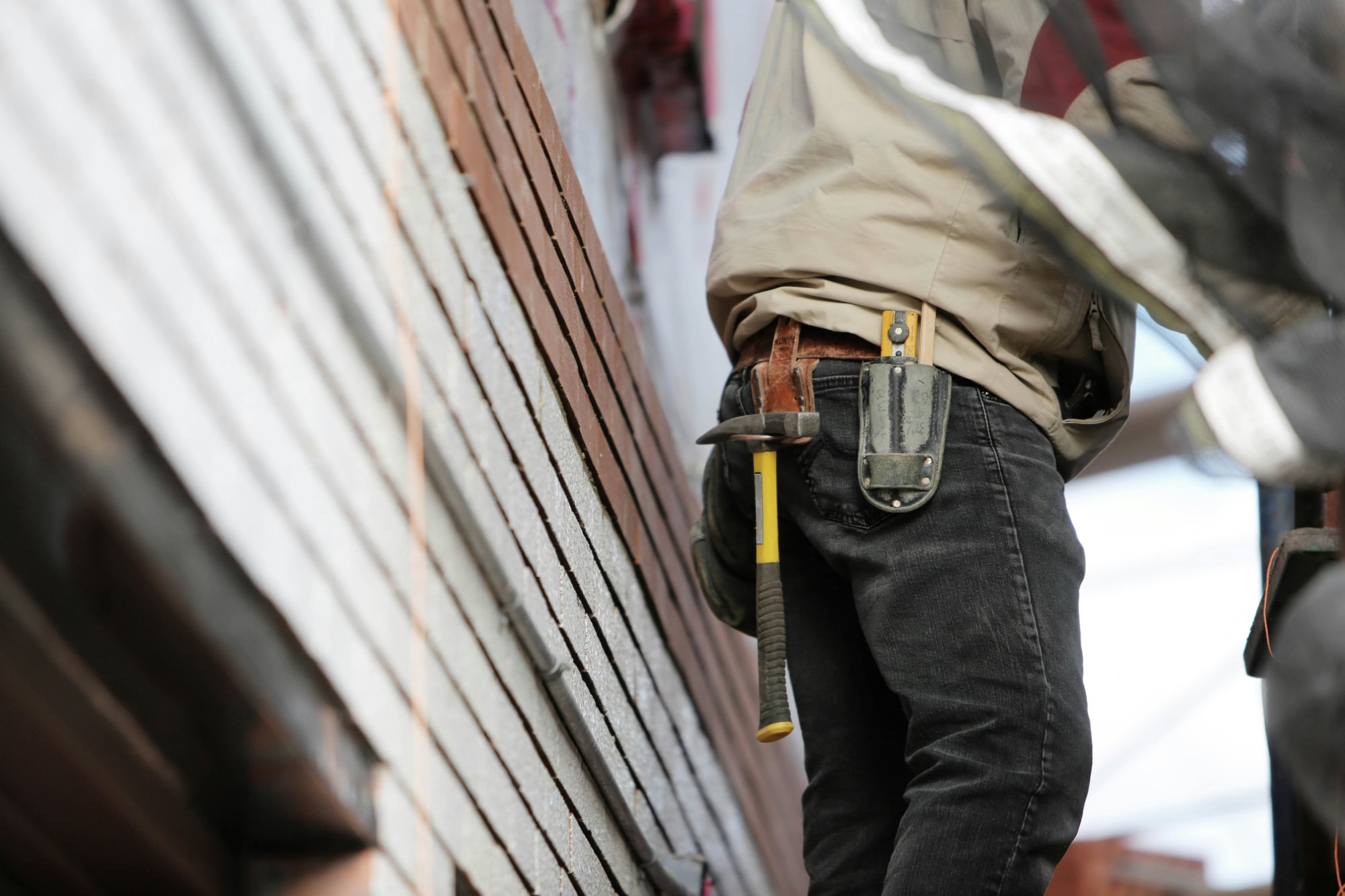Earn
How a $140k 'repair' became a tax strategy triumph and competitive edge
A Sydney investor secured an immediate deduction for $140,000 in rental property works after the ATO initially treated the spend as capital. In a market where the ATO says most rental schedules contain errors, the outcome offers a playbook for documentation, decision-making and cash-flow strategy.
How a $140k 'repair' became a tax strategy triumph and competitive edge
A Sydney investor secured an immediate deduction for $140,000 in rental property works after the ATO initially treated the spend as capital. In a market where the ATO says most rental schedules contain errors, the outcome offers a playbook for documentation, decision-making and cash-flow strategy.

This case study unpacks the evidence that swung the verdict, the true cost-of-capital impact, and the operational moves others can copy. It also maps the policy and market ripple effects likely to follow.
Story-driven, evidence-first case study
Context: An audit flashpoint in a market under the microscope
Australia’s rental tax landscape is a high-compliance zone. The Australian Taxation Office (ATO) has repeatedly flagged rental deductions as a focus area, noting widespread errors in returns and expanding its data-matching with state bond boards, insurers and property managers. Around 2.2 million individuals report rental income each year, with billions in deductions claimed. In this environment, where nine-in-ten claims have been found to contain mistakes in some ATO reviews, a Sydney investor’s successful immediate deduction for $140,000 of works stands out.
The case hinged on a classic tension: whether substantial works are a repair (immediately deductible under s 25-10 of the Income Tax Assessment Act 1997 and ATO ruling TR 97/23) or capital works (deductible over time under Division 43, typically 2.5% p.a.). The investor’s documentation and framing of the works—not the headline dollar value—proved decisive.

Decision: Frame the spend as ‘restore, not improve’
The investor’s strategic call was to position the scope as restoring a pre-existing defect to its original condition, rather than improving the asset. That choice drove everything: evidence collection, contractor instructions, and how invoices were described. Tax practitioners often caution that “big” does not equal “capital”—scope and provenance do. As Manu Gupta, Principal Partner at M G Arthur & Associates, puts it: large spend doesn’t automatically make it capital; contemporaneous evidence and a clear ‘like-for-like’ narrative do.
Two technical principles shaped the decision:
- Pre-existing defect vs. initial repairs: If the issue existed when acquired and the property was immediately put to income-producing use, carefully documented remediation can still be a repair rather than an initial capital cost.
- Restoration vs. improvement: Materials and design should aim for functional equivalence. Upgrading beyond original standards can tip the balance to capital.
Implementation: Evidence architecture and operational discipline
Winning the technical argument required meticulous execution. The investor and advisers built an “evidence stack” aligned to TR 97/23:
- Condition chronology: Pre-purchase building report and vendor disclosures identifying the defect. Time-stamped photos before, during and after work.
- Scope control: Engineer’s letter specifying remediation to original design; contractor statements confirming ‘like-for-like’ materials and no structural additions.
- Invoice hygiene: Itemised invoices separating remediation from any upgrade or new assets (e.g., separate line items for replacement vs. enhancement).
- Availability for rent: Lease and agent records showing continuity of income intent and minimal downtime strictly attributable to the repair.
- Insurance and warranties: Evidence that any claim proceeds, if relevant, were offset or disclosed to avoid double-dipping.
Behind the scenes, the adviser team applied a “three-bucket” classification to each cost line: repair (s 25-10), capital works (Div 43) or depreciating asset (Div 40). Where ambiguity existed, the default was to over-document and, if necessary, split invoices across buckets.
Results: Cash-flow uplift, audit defence, portfolio optionality
The immediate deduction unlocked a substantial timing benefit. To illustrate scale, if $140,000 is deducted at once rather than depreciated at 2.5% p.a. (i.e., $3,500 in year one), the additional first-year deduction is $136,500. At a top marginal rate plus Medicare levy (~47%), the illustrative cash tax saving is about $64,000. Even at a 37% marginal rate, the first-year timing advantage would be roughly $50,000. That is real working capital for mortgage buffers, further maintenance or vacancy risk.
Beyond cash flow, the investor achieved:
- Audit resilience: A tested evidence pack that can be reused as a template across the portfolio.
- Lower financing risk: Stronger after-tax cash position supports serviceability metrics in lender reviews.
- Operational playbook: A replicable process that property managers can embed into routine maintenance workflows.
Lessons: A replicable blueprint for owners, managers and advisers
- Documentation beats narrative: Photos, engineer reports and itemised invoices carry more weight than assertions.
- Design matters: Specify like-for-like materials and avoid scope creep into upgrades that trigger capital classification.
- Split, don’t lump: Mixed invoices are common; allocate costs across repair, capital works and assets with clear rationale.
- Time-stamp intent: Keep the property available for rent and show income-producing purpose before, during and after works.
- Governance is a team sport: Align owners, property managers, tradies and accountants on wording, scope and evidence before works commence.
Market and regulatory context: Why more cases will surface
The incentive to classify correctly is rising. Construction input costs surged through 2022–2023, pushing maintenance bills higher. Meanwhile, states are tightening minimum rental standards and resilience requirements, nudging owners into significant works. The ATO is equally active: it has expanded data-matching programs and publicly warned of widespread errors in rental claims. Expect two parallel effects: more owners attempting large repair deductions, and more ATO scrutiny of borderline claims. Industry bodies anticipate clearer guidance or case studies from the ATO to reduce ambiguity.
Tax agents report growing demand for “tax-ready maintenance packs” that bundle pre- and post-works evidence. Proptech platforms handling work orders are embedding photo capture and invoice classification—an emerging competitive edge for property managers seeking stickier landlord relationships.
Technical deep-dive: The repair/capital line in practice
Practical decision tree for borderline cases:
- Was the defect pre-existing? If yes, and the property was deployed to earn income, repair treatment is possible—if documented.
- Is the work restorative? If it improves beyond original standard (capacity, efficiency, materials), expect Division 43/40 treatment for that portion.
- Are mixed outcomes involved? Split costs: immediate deduction for restoration; capital works for structural improvements; depreciation for new assets.
Key references include s 25-10 ITAA 1997 (repairs), Div 43 (capital works at generally 2.5% p.a.) and ATO TR 97/23. In disputes, evidence rhythm—chronology, scope, invoices—tends to trump intent.
Future outlook: Strategy under tighter oversight
What’s next? The ATO is likely to sharpen guidance and audits of high-dollar repair claims. Expect more pre-engagement reviews by cautious advisers, and greater use of technology for evidence capture. For early movers, there’s competitive upside:
- Property managers: Productise “audit-ready maintenance” as a premium service; retention and fee uplift follow.
- Investors: Industrialise a governance stack across properties; capture cash-flow benefits without compliance drag.
- Lenders and insurers: Prefer clients with documented asset condition histories; lower risk and faster underwriting.
Bottom line: This $140,000 win isn’t a green light to re-label renovations as repairs. It is a signal that, with disciplined scoping and a defensible evidence trail, owners can unlock legitimate deductions and preserve cash when it matters most.

Tax refund
The ATO will be focusing on these four issues at tax time
The tax office has indicated it will be scrutinising areas where taxpayers are known to make mistakes. Read more

Tax refund
More than half of Aussies get stressed at tax time, survey finds
Many taxpayers feel that they may be missing out on deductions in their tax returns. Read more

Tax refund
Engage or face firmer action, ATO warns taxpayers with unpaid debts
The tax office is offering support and assistance to those with overdue debts. Read more

Tax refund
How to prepare for your tax return
While the end of the financial year is still a couple of months away, you can take action now to help maximise your tax return. Read more

Tax refund
What issues will be on the ATO’s radar this year?
H&R Block has outlined two main areas that the tax office is expected to focus on. Read more

Tax refund
How does the expanded low and middle income tax offset work?
Millions of taxpayers will receive hundreds of dollars more in their tax return this year. Read more

Tax refund
Why 90% of taxpayers could face a higher tax bill next financial year
A tax offset for over 10 million Aussies may not be extended in next month’s budget. Read more

Tax refund
PM ponders extension of low and middle income tax offset
Scott Morrison has hinted that a popular tax-saving measure may return in 2022. Read more

Tax refund
The ATO will be focusing on these four issues at tax time
The tax office has indicated it will be scrutinising areas where taxpayers are known to make mistakes. Read more

Tax refund
More than half of Aussies get stressed at tax time, survey finds
Many taxpayers feel that they may be missing out on deductions in their tax returns. Read more

Tax refund
Engage or face firmer action, ATO warns taxpayers with unpaid debts
The tax office is offering support and assistance to those with overdue debts. Read more

Tax refund
How to prepare for your tax return
While the end of the financial year is still a couple of months away, you can take action now to help maximise your tax return. Read more

Tax refund
What issues will be on the ATO’s radar this year?
H&R Block has outlined two main areas that the tax office is expected to focus on. Read more

Tax refund
How does the expanded low and middle income tax offset work?
Millions of taxpayers will receive hundreds of dollars more in their tax return this year. Read more

Tax refund
Why 90% of taxpayers could face a higher tax bill next financial year
A tax offset for over 10 million Aussies may not be extended in next month’s budget. Read more

Tax refund
PM ponders extension of low and middle income tax offset
Scott Morrison has hinted that a popular tax-saving measure may return in 2022. Read more











